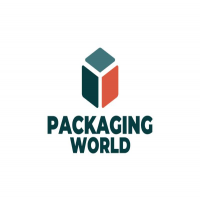Best Practices for Sealing Products to Ensure Safe Delivery

Strong 8k brings an ultra-HD IPTV experience to your living room and your pocket.
In the world of e-commerce and product shipping, ensuring that your products arrive safely at the customer’s doorstep is non-negotiable. While product quality and packaging design get most of the attention, how you seal your products plays a critical role in maintaining the integrity of your shipment. Proper sealing reduces damage, enhances the customer experience, and protects your brand’s reputation.
At The Packaging World, we’ve helped countless small businesses reduce shipping errors and customer complaints through effective packaging strategies. Below, we’ll walk you through the best practices for sealing products to ensure safe delivery—step by step.
Why Proper Sealing Matters
Protects Your Product
Sealing your package correctly ensures that the product remains intact throughout its journey. Whether it’s going across the city or across the country, shipping involves movement, stacking, and handling—conditions that can easily compromise a poorly sealed package.
Preserves Brand Trust
No customer wants to receive a damaged, opened, or tampered package. A well-sealed product gives buyers confidence that your business values their satisfaction and security.
Choosing the Right Sealing Materials
Packing Tape: Your First Line of Defense
Not all tape is equal. Choosing the wrong type of tape can lead to failed deliveries or damaged goods.
Pressure-Sensitive Tape (PST): Ideal for standard packaging. Easy to apply and suitable for light to medium-weight shipments.
Water-Activated Tape (WAT): A tamper-evident, reinforced tape that bonds tightly with corrugated material. Ideal for heavier or high-value products.
Filament Tape: Reinforced with fiberglass for added strength. Best for heavy, bulky, or oddly shaped boxes.
Pro Tip: Avoid duct tape or masking tape—they don’t hold well during shipping.
Tamper-Evident Seals
For added security and trust, use tamper-evident tape or stickers. These show if the box has been opened before reaching the customer, making them great for electronics, luxury goods, or subscription boxes.
Proper Sealing Techniques
Use the H-Taping Method
The H-taping method is widely regarded as the most secure way to seal a box.
Apply one strip of tape across the center seam.
Add one strip along each edge where the flaps close.
Reinforce the bottom using the same method to prevent breakage.
This creates an “H” shape that locks the flaps down and keeps the box closed under pressure.
Reinforce Weak Points
If your box is large, heavy, or contains fragile items, reinforce the edges and corners with additional strips of tape. Also seal any other entry points, such as irregular flaps or overlapping seams.
At The Packaging World, we advise customers to test-seal their packages and conduct a shake test to identify weak spots.
Box Selection and Internal Support
Don’t Overfill or Underfill
Overfilled boxes are more likely to burst open under pressure.
Underfilled boxes allow items to move, increasing the chance of breakage.
Use interior fillers like corrugated inserts, kraft paper, bubble wrap, or molded trays to keep items in place.
Choose the Right Box Size
Ensure your box closely fits your product dimensions. An oversized box wastes space, increases shipping costs, and requires more filler. A tight fit reduces movement and minimizes the risk of product damage.
Labeling and Handling Considerations
Secure and Visible Labels
Place the shipping label on the flattest part of the box.
Keep it clear of tape seams or folds.
Cover it with clear packing tape to protect against moisture or rubbing.
Add Handling Instructions
If your product is fragile, perishable, or orientation-sensitive, include labels like:
“Fragile – Handle With Care”
“This Side Up”
“Do Not Stack”
These small touches help reduce mishandling and show that you care about product safety.
Final Checks Before Shipping
Before sending out your package, do a final inspection:
Gently shake the box—do the contents move?
Are all flaps sealed securely?
Is the tape smooth, with no lifting corners or gaps?
Are labels correctly placed and legible?
Pro Tip: Conduct a drop test for fragile items by dropping the package from waist height to simulate rough handling.
Conclusion: Seal with Care, Deliver with Confidence
Sealing your packages properly is a low-cost, high-impact way to protect your products and deliver a professional customer experience. Whether you’re shipping out 10 packages a week or 1,000, these best practices will help ensure your products arrive safely and impress your customers from the moment they open the box.
At The Packaging World, we don’t just provide custom boxes—we offer expert guidance for every part of the packaging process. From material selection to sealing strategies, we’re here to help small businesses grow with confidence.
Need help choosing the best sealing materials or techniques?
Reach out to our team at The Packaging World—we’re happy to help you seal the deal!
Note: IndiBlogHub features both user-submitted and editorial content. We do not verify third-party contributions. Read our Disclaimer and Privacy Policyfor details.



